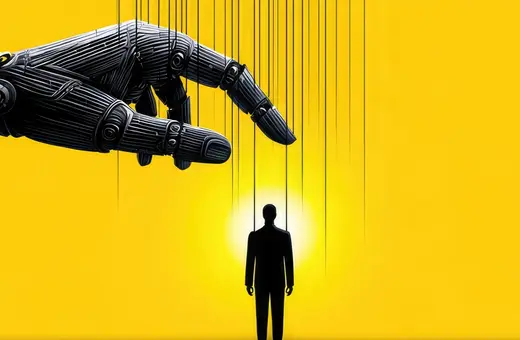Synthetic data – the use of AI to create datasets that mimic real world data – is rapidly becoming a much bigger part of our daily lives. But this form of data raises critical philosophical and ethical questions that will shape the future for all of us, write Mikkel Krenchel and Maria Cury.
There’s a data revolution happening and nobody is talking about it. It revolves around synthetic data. Unless you work in the field of artificial intelligence (AI), you may have never heard of it. But this rapidly growing form of data raises critical philosophical and ethical questions that will shape the future for all of us. First, what is synthetic data? There are many types, but the basic premise is the use of AI to create datasets that mimic real world data. These datasets can then be used to feed the insatiable need for data that trains machine learning algorithms to make better predictions. Instead of training algorithms on messy, expensive real-world data riddled with privacy issues and bias, now one can supplement or supplant real-world data with “better,” “cheaper,” or “bigger” datasets constructed using AI. Put simply, synthetic data is artificial data feeding artificial intelligence. It’s similar to deep fakes, yet used for less nefarious purposes, and applied to not only videos and images but any type of data under the sun, from insurance data, to army intelligence, self-driving vehicles, or even patient health care records. It is as awe-inspiring as it is terrifying.
___
___
Synthetic data is not a new concept, but what’s new is the surging demand for it and the AI capabilities to support it. Organizations across the world are investing massively in training new AI systems in hopes of changing how we learn, heal, trade, drive, buy, wage war and much more. To train these systems, they will need ever expanding quantities of data. Yet, good data is harder than ever to come by, as concerns and regulations around privacy, bias, and questions around responsible AI are finally creating some constraints on data collection. As such, Gartner predicts that by 2024 no less than 60% of all data used for AI will be synthetic. Already, 96% of teams working on computer vision rely on synthetic data and another analysis suggests that the number of companies focused on supplying synthetic data nearly doubled between 2019 and 2020 alone. It’s not hyperbole to think the role of ‘synthetic data engineer’ will be the most in-demand profession one day.
That means we are standing on the brink of a world where many of the technologies that surround us might not be built in response to reality, but to what a machine imagines that reality to be. This begs the questions: What happens if and when there are gaps between the real world the AI operates in, and the synthetic world it was trained in? How do we narrow those gaps, and what are the ethical and safety guardrails we need to put in place? If data is the new oil, as some argue, what happens if large-scale datasets become a cheap commodity that anyone with the right AI can build? What might that mean for the business models of big tech companies centered around their unique access to real-world data? And what will happen to empirical disciplines like the social sciences if we increasingly rely on data that isn’t collected in the real world?




















Join the conversation